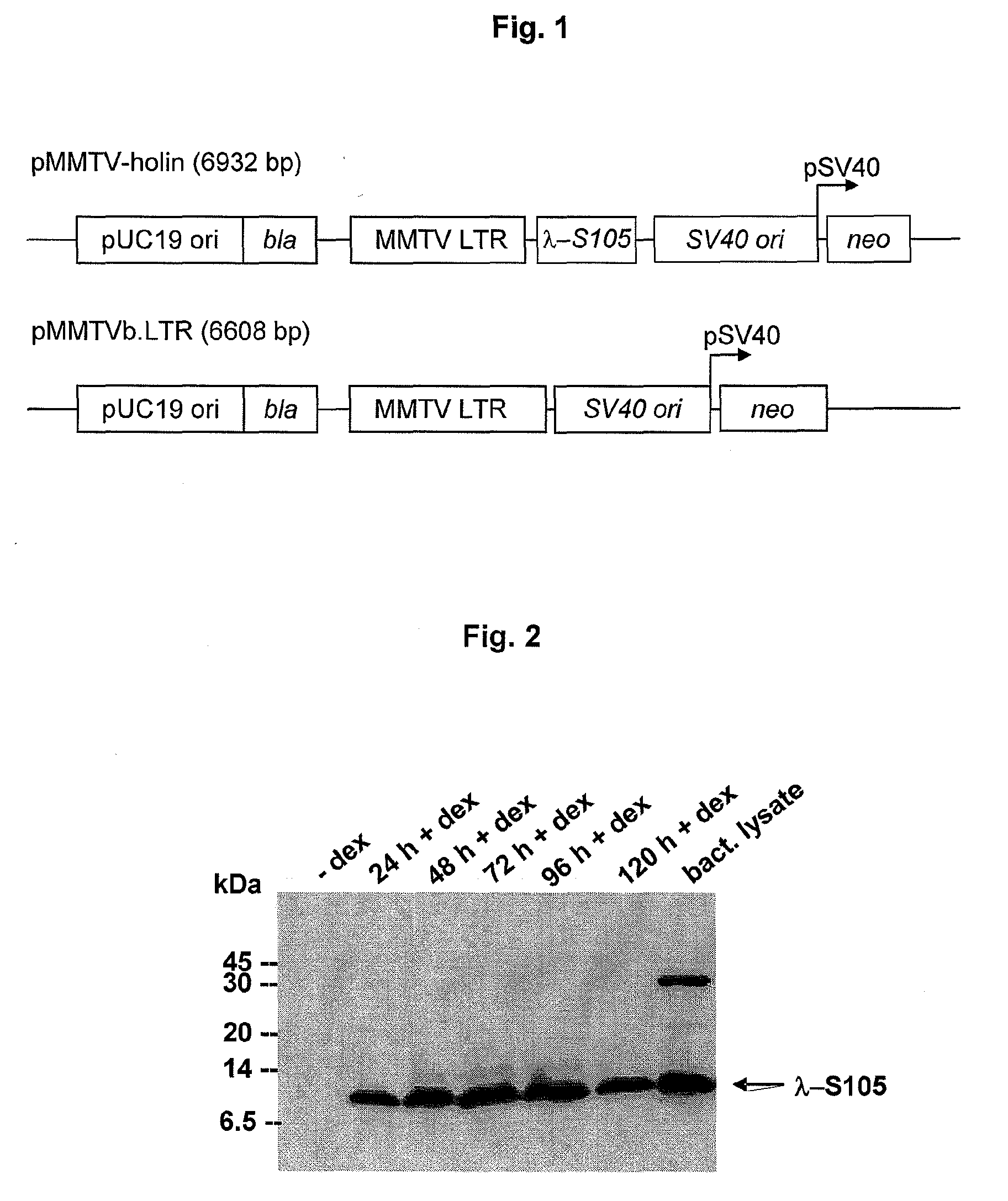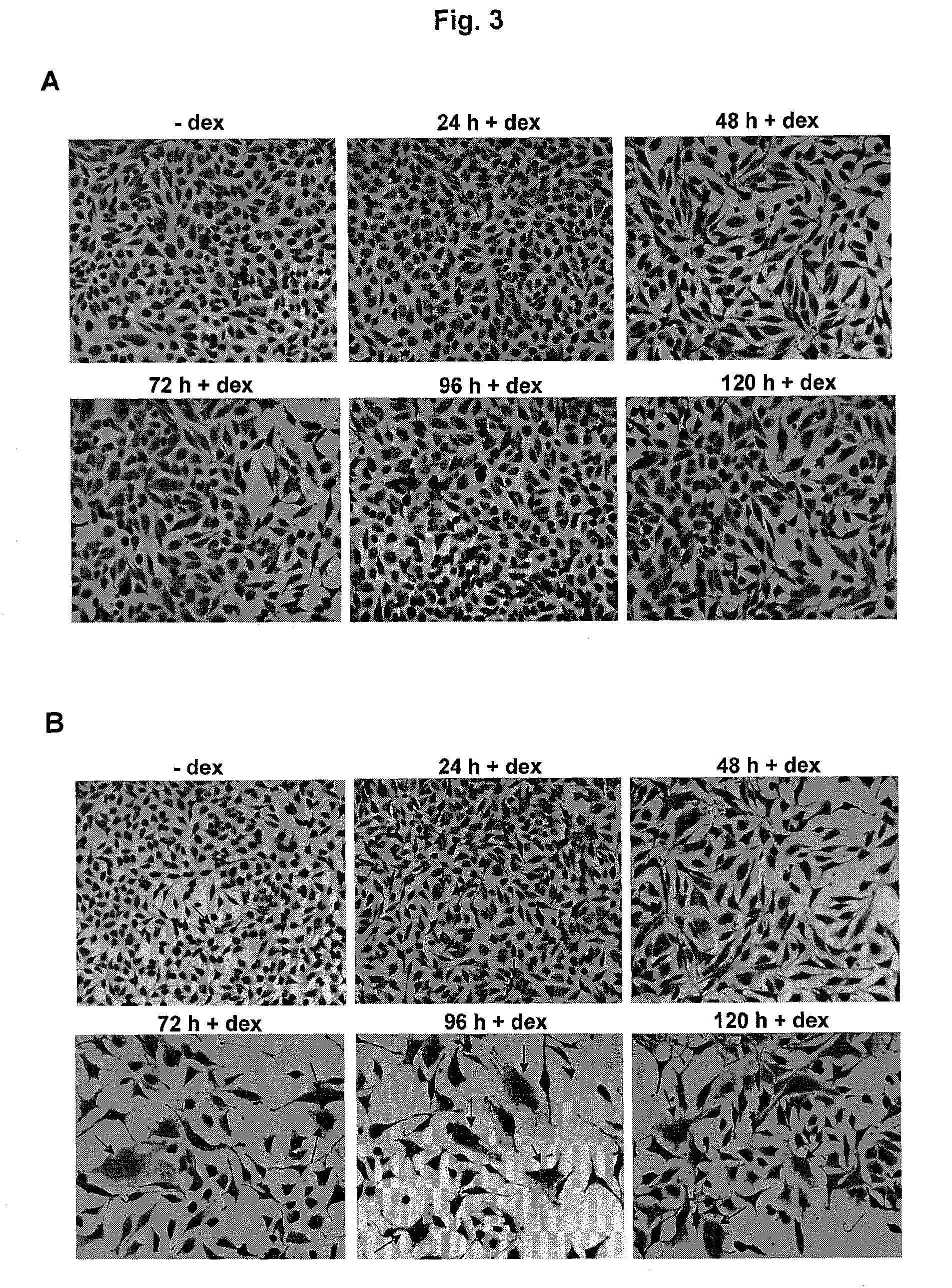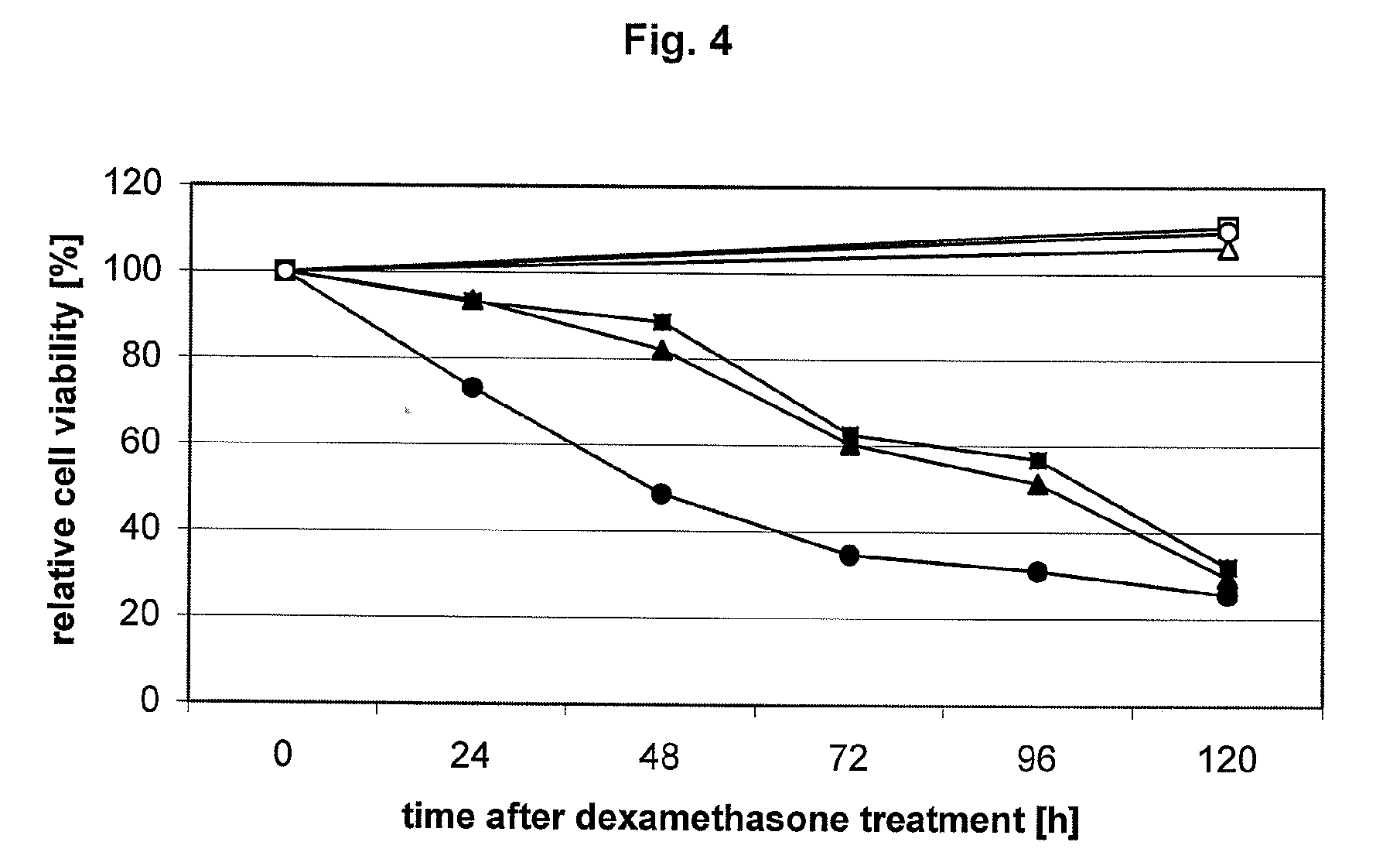Bacteriophage and prophage proteins in cancer gene therapy
a cancer gene and prophage technology, applied in the field of polypeptides, can solve the problems of cancer cell resistance development, cancer as a cause of death, growing problem,
- Summary
- Abstract
- Description
- Claims
- Application Information
AI Technical Summary
Benefits of technology
Problems solved by technology
Method used
Image
Examples
example 1
Functionality of a Vector Expressing the Phage Lambda (λ) S105 Protein
[0125]In this example, the functionality of the vector used to express λ-S105 in HeLa cells is examined. The part of the Sλ open reading frame (ORF) encoding the λ-S105 allele (codons 3 to 107; nucleotides 45192 to 45509 of the bacteriophage λ genome [GenBank accession number NC001416]) was amplified by PCR from plasmid pVIII-S105 [53] using primers V13 and W13 (Table 1), restricted with XbaI and SacII and ligated with the vector pMMTVGFP (Table 1) that had also been restricted with XbaI and SacII, resulting in the vector pMMTV-holin (FIG. 1).
[0126]pMMTVGFP, the parental vector of pMMTV-holin was constructed as follows: the CMV promoter-containing NruI-BamHI fragment of pcDNA3 (Table 1) was replaced by a NruI-BamHI fragment of the vector pLTR.stp (Table 1) containing a mouse mammary tumour virus long terminal repeat (MMTV LTR), resulting in the vector pMMTVb.LTR (Table 1). The eGFP gene was cut out of pEGFP-1 (Tab...
example 2
Morphological Changes of Hela Cells after Dexamethasone-Induced λ-S105 Expression
[0131]In this example, the morphological changes of HeLa cells after dexamethasone induced λ-S105 expression are examined. Briefly, 1×104 HeLa cells stably transfected with pMMTV-holin or, as a control, pMMTVb.LTR were seeded into the chambers of 8-well chamber slides and cultivated for 120 h. At different defined time points, 1 μM dexamethasone was added to the culture medium and the cells were further incubated for 24, 48, 72, 96, and 120 h in the presence of the hormone. For cells that were treated with dexamethasone for more than 48 h, fresh dexamethasone was added to the culture medium every second day. Cells were fixed in buffered formalin and counterstained for 2 min in hemalum solution (Fluka, Seeize, Germany). Slides were analysed by standard light microscopy (Zeiss Axiovert 200M, Carl Zeiss GmbH, Vienna, Austria) and photographed. While pMMTVb.LTR-transfected cells did not show any significant...
example 3
Effect of Dexamethasone-Induced λ-S105 Expression on Cellular Metabolism
[0132]In this example, the effect of dexamethasone-induced λ-S105 expression in HeLa cells on cellular metabolism as determined by the measurement of relative NADH and NADPH levels using a MTT assay (Sigma-Aldrich, Vienna, Austria) is described.
Briefly, 1×105 HeLa cells stably transfected with pMMTV-holin or, as a negative control, pMMTVb.LTR were seeded into 6-well-plates and cultivated for 120 h. At different defined time points, 1 μM dexamethasone was added to the culture medium and the cells were incubated for 24, 48, 72, 96 and 120 h in the presence of the hormone. For cells that were treated with dexamethasone for more than 48 h, fresh dexamethasone was added to the culture medium every second day. At time point 120 h, all cells were harvested simultaneously and subjected to a MTT assay for determining the relative amounts of NADH and NADPH as an indicator for cell metabolism which, in turn, is an indicato...
PUM
| Property | Measurement | Unit |
|---|---|---|
| diameter | aaaaa | aaaaa |
| diameter | aaaaa | aaaaa |
| diameter | aaaaa | aaaaa |
Abstract
Description
Claims
Application Information
 Login to View More
Login to View More - R&D
- Intellectual Property
- Life Sciences
- Materials
- Tech Scout
- Unparalleled Data Quality
- Higher Quality Content
- 60% Fewer Hallucinations
Browse by: Latest US Patents, China's latest patents, Technical Efficacy Thesaurus, Application Domain, Technology Topic, Popular Technical Reports.
© 2025 PatSnap. All rights reserved.Legal|Privacy policy|Modern Slavery Act Transparency Statement|Sitemap|About US| Contact US: help@patsnap.com



